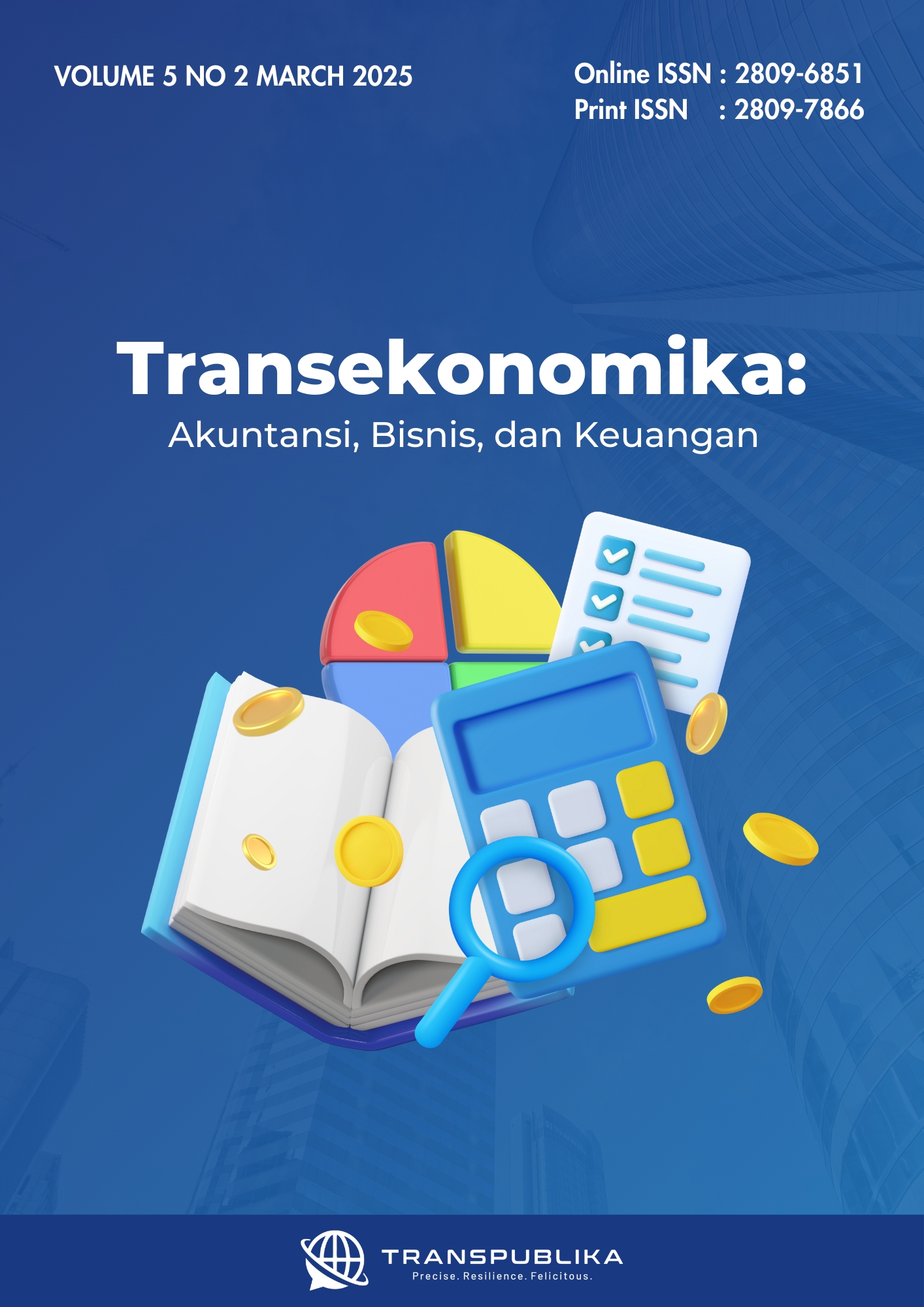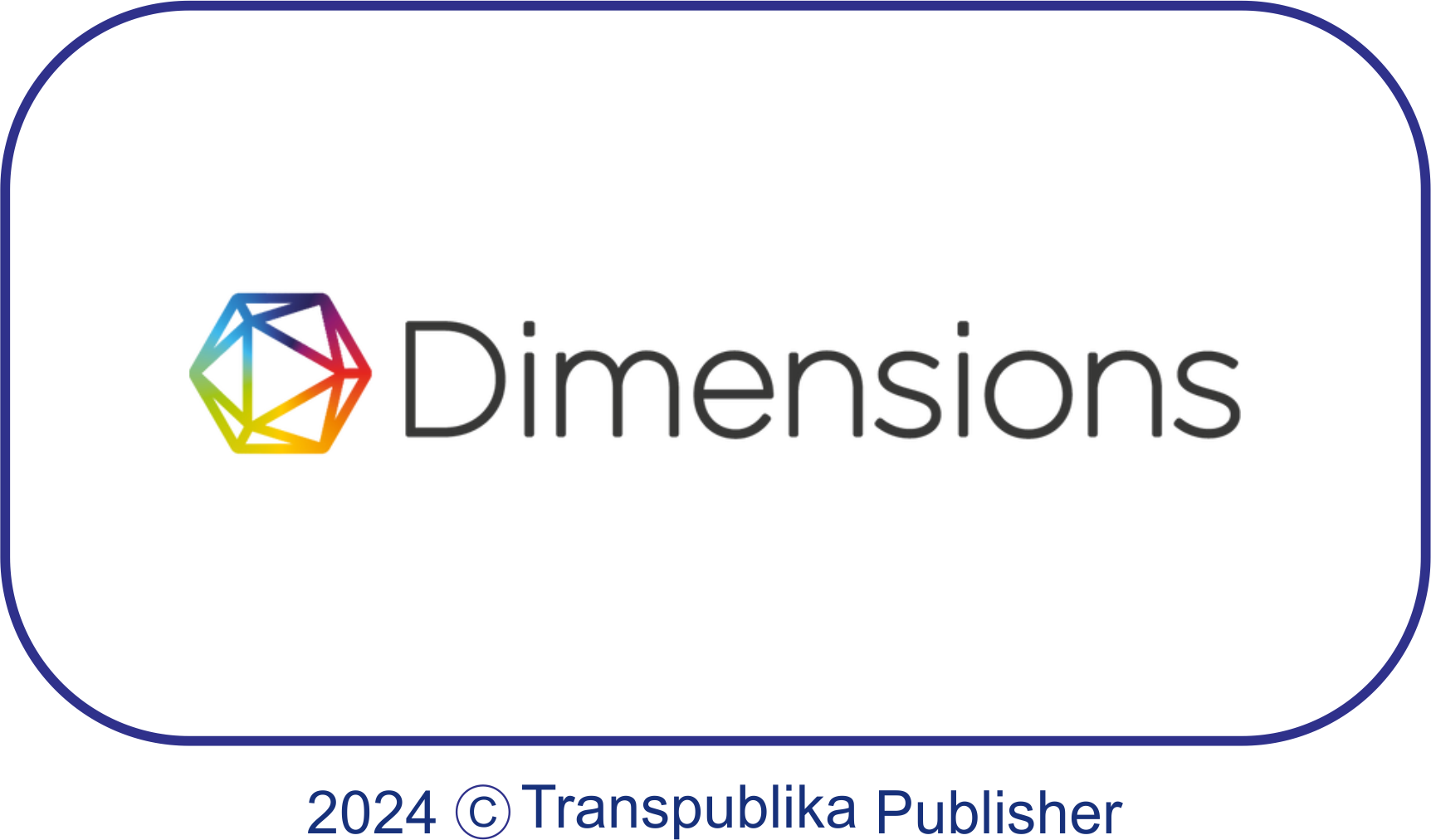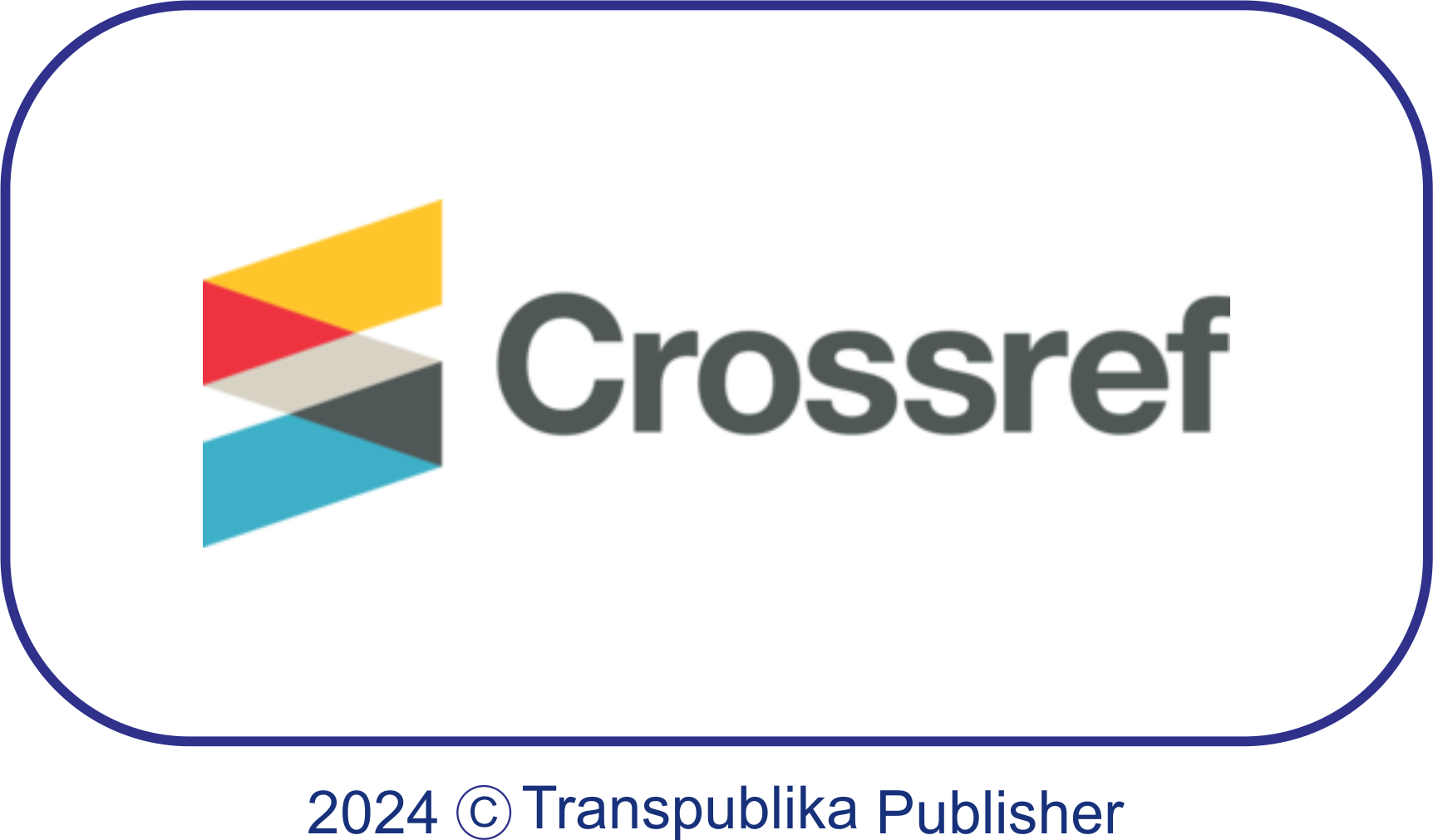Implikasi Faktor Makroekonomi terhadap Kinerja Keuangan Bank BUMN di Indonesia dalam Satu Dekade
Abstract
The banking sector has a strategic role in Indonesia's economic growth, with state-owned banks as the main pillars of the national financial system. This study is intended to evaluate the impact of macroeconomic factors on the financial performance of state-owned banks during the period 2014-2023 using Return on Assets (ROA) as a performance indicator. This quantitative research with panel data regression method uses independent variables of interest rate, inflation, and exchange rate. Secondary data was obtained from the financial statements of four state-owned banks (BRI, BNI, Mandiri, and BTN) analyzed using STATA 17. The study states that interest rates have a significant positive impact on ROA, while inflation only has an insignificant positive impact and exchange rates have an insignificant negative impact on ROA. The research findings indicate that state-owned banks have good adaptability in dealing with fluctuations in macroeconomic conditions. This study contributes to the understanding of the dynamics of national banking financial performance and suggests the importance of paying attention to interest rates in bank management strategies.
Downloads
References
Ahmad, Z., Hassan, A., & Dakingari, U. M. (2022). Effect Of Firm Characteristics And Some Key Monetary Variables On The Financial Performance Of Unilever Nigeria PLC. Asian Journal of Economic Modelling, 10(4), 236 – 244. https://doi.org/10.55493/5009.v10i4.4663
Alamsyah, D. P., Arifin, T., Ramdhani, Y., Hidayat, F. A., & Susanti, L. (2022). Classification of Customer Complaints: TF-IDF Approaches. 2022 2nd International Conference on Intelligent Technologies, CONIT 2022. https://doi.org/10.1109/CONIT55038.2022.9848056
Alibabaee, G., & Khanmohammadi, M. H. (2016). Economic variables and financial performance of the company. International Business Management, 10(19), 4561 – 4566.
Anas, T., Hill, H., Narjoko, D., & Putra, C. T. (2022). The Indonesian Economy in Turbulent Times. Bulletin of Indonesian Economic Studies, 58(3), 241 – 271. https://doi.org/10.1080/00074918.2022.2133344
Arlt, J., & Arltova, M. (2016). Forecasting of the Annual Inflation Rate in the Unstable Economic Conditions. Proceedings - 2015 2nd International Conference on Mathematics and Computers in Sciences and in Industry, MCSI 2015, 231 – 234. https://doi.org/10.1109/MCSI.2015.34
Bahmani-Oskooee, M. (2013). Exchange rates in developed and emerging markets: Practices, challenges and economic implications. In Exchange Rates in Developed and Emerging Markets: Practices, Challenges and Economic Implications.
Creswell, J. W., & Creswell, J. D. (2018). Research Design Qualitative, Quantitative, and Mixed Methods Approaches Fifth Edition. In Introducing English Language (pp. 285–291). SAGE Publications, Inc.
Dang, V. D. (2022). The Impact of Monetary Policy on Bank Profitability and the Moderating Role of Funding Patterns in Vietnam. Institutions and Economies, 14(1), 109 – 134. https://doi.org/10.22452/IJIE.vol14no1.5
Deshpande, B., Ranjith Kumar, S., Rani, I., & Mathiyarasan, M. (2024). The Crucial Role of ESG in Sustainable Reporting: A Determining Factor for the Performance of Indian Co. Studies in Systems, Decision and Control, 536, 463 – 473. https://doi.org/10.1007/978-3-031-63402-4_39
Dutu, R. (2016). Why has economic growth slowed down in Indonesia? An investigation into the Indonesian business cycle using an estimated DSGE model. Journal of Asian Economics, 45, 46 – 55. https://doi.org/10.1016/j.asieco.2016.06.003
Fathi, A., Isiksal, A., & Ismaeel, A. (2022). The Effect of Inflation on Financial and Accounting Data’s Ability to Reflect Profitable Gains Reported by Financial Statements. 2022 International Conference on Sustainable Islamic Business and Finance, SIBF 2022, 241 – 245. https://doi.org/10.1109/SIBF56821.2022.9939970
Fatihudin, D., Jusni, & Mochklas, M. (2018). How measuring financial performance. International Journal of Civil Engineering and Technology, 9(6), 553–557.
Fujii, H., Iwata, K., Kaneko, S., & Managi, S. (2013). Corporate Environmental and Economic Performance of Japanese Manufacturing Firms: Empirical Study for Sustainable Development. Business Strategy and the Environment, 22(3), 187 – 201. https://doi.org/10.1002/bse.1747
Ghafel, O., & Bougatef, K. (2024). The Impact of Inflation on Bank Profitability: Empirical Evidence from Iraq. Pakistan Journal of Life and Social Sciences (PJLSS), 22. https://doi.org/10.57239/PJLSS-2024-22.2.00111
Helmold, M., Küçük Yılmaz, A., Dathe, T., & Flouris, T. G. (2022). Financial SCRM and Mitigation Management. Management for Professionals, Part F358, 161 – 177. https://doi.org/10.1007/978-3-030-90800-3_8
Indrawati, S. M., Satriawan, E., & Abdurohman. (2024). Indonesia’s Fiscal Policy in the Aftermath of the Pandemic. Bulletin of Indonesian Economic Studies, 60(1), 1 – 33. https://doi.org/10.1080/00074918.2024.2335967
Kamaruzzaman, Z. A. (2019). Inflation: A Malaysia story. International Journal of Engineering and Advanced Technology, 8(6 Special Issue 3), 132 – 135. https://doi.org/10.35940/ijeat.F1022.0986S319
Karamoy, H., & Tulung, J. E. (2020). The impact of banking risk on regional development banks in Indonesia. Banks and Bank Systems, 15(2), 130–137. https://doi.org/10.21511/bbs.15(2).2020.12
Kencana, E. N., Kiswanti, N., & Sari, K. (2017). The application of cat swarm optimisation algorithm in classifying small loan performance. Journal of Physics: Conference Series, 893(1). https://doi.org/10.1088/1742-6596/893/1/012037
Kopecká, N. (2018). A Literature Review of Financial Performance Measures and Value Relevance. Springer Proceedings in Business and Economics, 385 – 393. https://doi.org/10.1007/978-3-319-68762-9_42
Kosumi, A., & Zharku, L. (2024). Bank-Specific, Economic And Legal Determinants Of Profitability In The Republic Of North Macedonia. Access to Justice in Eastern Europe, 7(2), 212 – 233. https://doi.org/10.33327/AJEE-18-7.2-a000209
Levi, M. D. (2014). The macroeconomic environment of business: Core concepts and curious connections. In The Macroeconomic Environment of Business: Core Concepts and Curious Connections. https://doi.org/10.1142/7716
Lizein, B., Triansyah, F. A., Acheampong, K., Ahmad, S. Y., & Mosavi, H. (2024). Fluctuations oil prices in the world and their impact on Indonesian macroeconomics. IOP Conference Series: Earth and Environmental Science, 1379(1). https://doi.org/10.1088/1755-1315/1379/1/012030
Marwansyah, S., & Setyaningsih, E. D. (2018). Pengaruh Kinerja Perbankan Terhadap Rasio Profitabilitas Pada Bank BUMN. Jurnal Akuntansi, Ekonomi Dan Manajemen Bisnis, 6(1), 11–18. https://doi.org/10.35141/jraj.v1i1.375
Misch, M. B., & Baim, D. V. (2016). Using small baskets of financial assets to estimate exchange rates: The argentine experience. Graziadio Business Report, 19(2).
Napitupulu, R. B., Simanjuntak, T. P., Hutabarat, L., Damanik, H., Harianja, H., Sirait, R. T. M., & Tobing, C. E. R. L. (2021). Penelitian Bisnis : Teknik dan Analisa Data dengan SPSS - STATA - EVIEWS. In Madenatera (Vol. 1). Madenatera.
Nehru, V. (2013). Survey of recent developments. Bulletin of Indonesian Economic Studies, 49(2), 139 – 166. https://doi.org/10.1080/00074918.2013.809840
Nevile, J. W. (2019). The rate of interest. In Post-Keynesian Essays from down under Volume IV: Essays on Theory: Theory and Policy in an Historical Context. https://doi.org/10.1057/978-1-137-47529-9_31
Nicoarǎ, M. (2012). The inflation-complex socio-economic phenomenon. Quality - Access to Success, 13(SUPPL. 2), 133 – 141.
Nishiyama, Y. (2013). Interest rates: Term structure models, monetary policy, and prediction. In Interest Rates: Term Structure Models, Monetary Policy, and Prediction.
Nurbojatmiko, Khudzaeva, E., Putra, S. J., Durachman, Y., & Rokhim, M. N. (2023). Analysis of Continuance Use Intention in BNI Mobile Banking Using The Expectation Confirmation Model (ECM). 2023 11th International Conference on Cyber and IT Service Management, CITSM 2023. https://doi.org/10.1109/CITSM60085.2023.10455418
Nurwulandari, A., Hasanudin, H., Subiyanto, B., & Pratiwi, Y. C. (2022). Risk Based bank rating and financial performance of Indonesian commercial banks with GCG as intervening variable. Cogent Economics & Finance, 10(1), 2127486.
Patvardhan, N., Bhattacharyya, S., Ranade, C. M., & Joshi, D. (2024). Smart Data Analytics: Measuring ESG Impact and Banking Performance Through ROA in Industry 4.0. 2024 15th International Conference on Computing Communication and Networking Technologies, ICCCNT 2024. https://doi.org/10.1109/ICCCNT61001.2024.10725001
Priya, P. S., Shah, J. A., Aarawal, A., Kalra, R., Kadam, S., & Sontakke, K. A. (2024). Machine Learning Enabled Financial Statements in Assessing a Business’s Performance. Proceedings of 9th International Conference on Science, Technology, Engineering and Mathematics: The Role of Emerging Technologies in Digital Transformation, ICONSTEM 2024. https://doi.org/10.1109/ICONSTEM60960.2024.10568659
Putri, P. I., Rahayu K, N., Rahmayani, D., & Siregar, M. E. S. (2022). The Effect of Green Banking and Financial Performance on Banking Profitability. Quality - Access to Success, 23(191), 38 – 45. https://doi.org/10.47750/QAS/23.191.05
Reaz, M., Mahat, F., Dahir, A. M., Sahabuddin, M., & Al Mahi, A. S. M. M. (2017). Exchange rate volatility and financial performance of agriculture firms in malaysia: An empirical analysis using GARCH, wavelet and system GMM. Business and Economic Horizons, 13(3), 409 – 427. https://doi.org/10.15208/beh.2017.29
Revindo, M. D., & Gan, C. (2017). Rural microfinance banking viability and outreach: A case of bank rakyat Indonesia. In Microfinance In Asia. https://doi.org/10.1142/9789813147959_0011
Rodriguez-Fernandez, M., Fernandez-Alonso, S., & Rodriguez-Rodriguez, J. (2014). Board characteristics and firm performance in Spain. Corporate Governance (Bingley), 14(4), 485 – 503. https://doi.org/10.1108/CG-01-2013-0013
Sapiri, M., & Putra, A. H. P. K. (2023). Causality of Bank Financial Performance, Green Bond, CSR, Green Financing Portfolio and CO2 Emissions in Transportation: Evidence from Indonesia. International Journal of Energy Economics and Policy, 13(6), 511 – 522. https://doi.org/10.32479/ijeep.14936
Sugiyarto, Randa, M., & Sufahani, S. (2019). Analysis stock price index using residual income model in jakarta islamic index. Journal of Advanced Research in Dynamical and Control Systems, 11(12 Special Issue), 47 – 51.
Susilo, B. (2025). Peran Mediasi Manajemen Risiko Pada Pengaruh Penggunaan Digital Payment Terhadap Kinerja Keuangan Bank Swasta di Indonesia Selama Pandemi Covid-19 Tahun 2020-2023. JEMSI: Jurnal Ekonomi Manajemen Sistem Informasi, 6(3), 1796–1810.
Susilo, B., Usman, B., & Lestari, H. S. (2024). The Influence Of Ceo Characterıstıcs , Rısk Management , Fınancıal Dıgıtalızatıon And Exchange Rate On Bank Performance Moderated By Interest Rate In Indonesia. Asian Journal of Management Entrepreneurship and Social Science, 05(01), 329–353.
Tesema, T. N. (2024). The effect of capital structure on performance: empirical evidence from manufacturing companies in Ethiopia. Cogent Economics and Finance, 12(1). https://doi.org/10.1080/23322039.2023.2300926
Tobing, R. D. (2017). Improving economic development equity through economic democracy-based banking credit. International Journal of Civil Engineering and Technology, 8(9), 820 – 831.
Tweeten, L. (2019). Macroeconomic linkages to agriculture. In Agricultural Policy Analysis Tools for Economic Development. https://doi.org/10.4324/9780429042959-20
Wahyudi, S. T., Nabella, R. S., & Sari, K. (2021). Measuring the competition and banking efficiency level: A study at four commercial banks in Indonesia. Banks and Bank Systems, 16(1), 17 – 26. https://doi.org/10.21511/bbs.16(1).2021.02
Yunita Sahara, A. (2013). Analisis Pengaruh Inflasi, Suku Bunga BI, dan Produk Domestik Bruto terhadap Return On Asset (ROA) Bank Syariah di Indonesia. Jurnal Ilmu Manajemen, 1(1), 149–157.
Copyright (c) 2025 Bambang Susilo

This work is licensed under a Creative Commons Attribution 4.0 International License.








.png)







.png)


.png)

.png)















